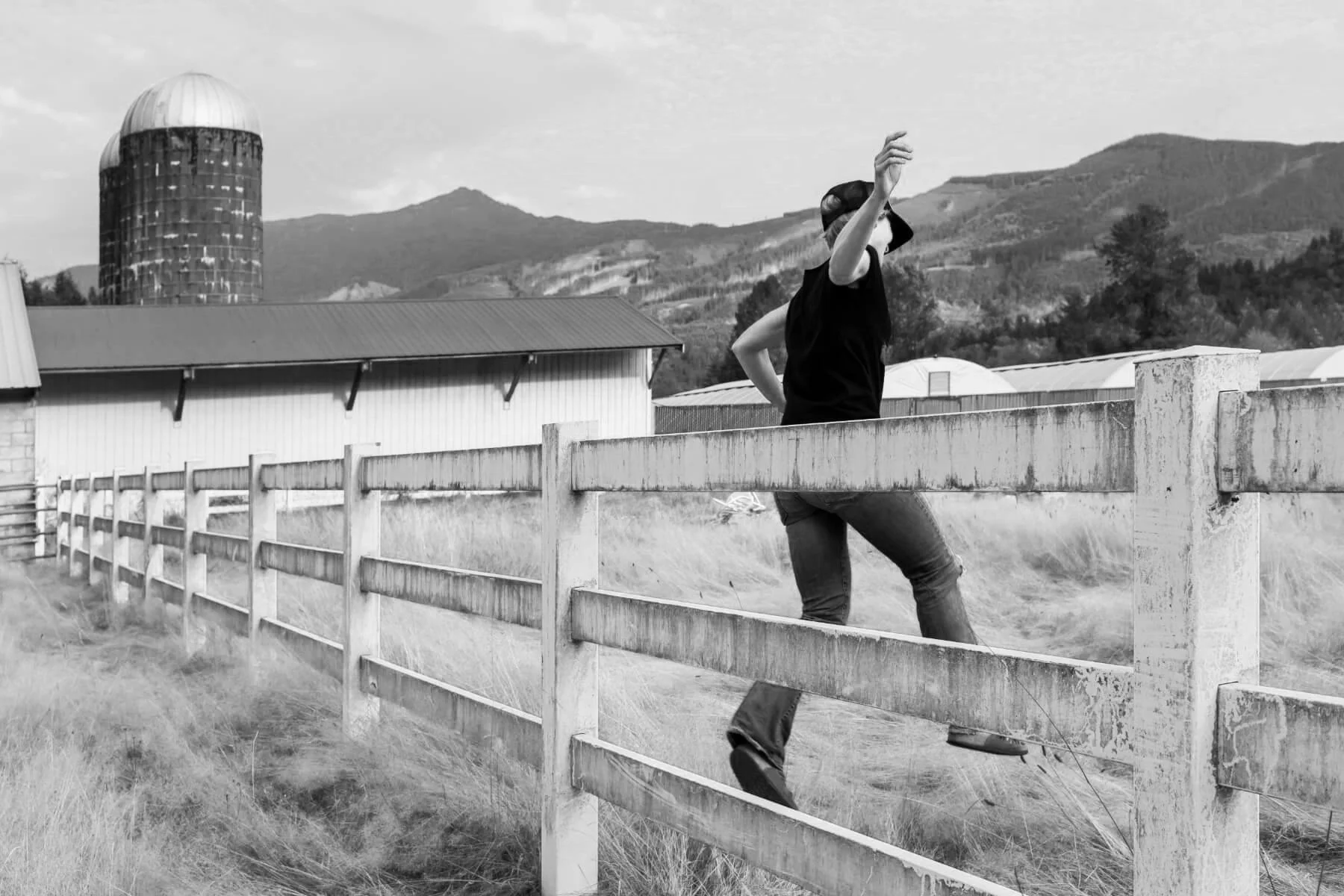
What This Is
Stewarding shared waters through story
A Watershed at the Crossroads
The Nooksack River flows from glacial peaks to the Salish Sea, keeping everything alive here—the salmon, the tribes, the forests, and for the last couple hundred years, the farms and cities. But things are changing. The glaciers are shrinking. Rain falls differently. The river carries less water in summer, and everyone needs a share.
In 2023, the state launched water rights adjudication—a legal process that elsewhere has meant decades of courtroom battles while salmon populations crash and family farms fold.
Perfect setup for a battle, right?
Except something else happened.
Four Words That Changed Everything
"We are not enemies."
That's what Jay Julius of the Lummi Nation said to Brad Rader, a family berry farmer, during a heated water meeting. Simple words. Huge impact.
Brad's own dad had been forced off farmland before. He knew what happens when farming communities collapse. So he called filmmaker Aaron Straight: "Help us tell a different story."
What started as a documentary became something bigger—a community experiment in choosing relationship over litigation.
When People Show Up as Themselves
In March 2025, tribal fishers brought salmon to a dinner table in Bellingham. Farmers contributed potatoes and berries. Civic leaders brought curiosity. Rich Appel, a dairy farmer, invited Free Borsey to fish from his land—a simple gesture that bridged generations of division. Jay Julius shared his lineage back to the 1855 Treaty signers, saying "this isn't just our treaty; it's your treaty too."
These moments ripple outward. At a food systems conference a month prior, Brad and Free stood up together for the first time—no script, just neighbors listening to one another’s stories. Something palpable shifted as each of them saw in the other a deep-rooted respect for and calling to steward the health of our communities and the waters that connect us all.
How It Works
1. River Gatherings
We meet where the water flows—delta, farmlands, headwaters. Get our boots muddy. Share meals. Listen to each other. No committees, no presentations. Just people and place.
These gatherings bring together tribal members, farmers, environmental advocates, and civic leaders to experience the river together, share meals, tell stories, and build the relationships necessary for collaborative solutions. We design these experiences to be memorable and slightly inconvenient—moving participants out of comfort zones and into direct relationship with the watershed that connects us all.
2. Story Documentation
A feature-length documentary, shorter video vignettes, and fine art pieces capture the voices of people on all sides of these issues and the river itself, focusing on the willingness of the brave to work together despite historical trauma. The filming process itself helps deepen connections, as participants share their stories and witness moments of breakthrough.
Our team spends significant time building trust before cameras ever appear—visiting farms, joining fishing trips, and participating in community life. This commitment continues long after filming concludes. Because authentic relationship-building requires staying power that bridges periods when resources are scarce and public attention wanes.
3. Community Engagement
The gatherings provide powerful content for the film, while the film becomes a catalyst for broader community engagement. When completed, we'll host screenings throughout Whatcom County and beyond, each followed by facilitated conversations that invite viewers to find their own connections to water issues and each other.
The film extends the reach of the gatherings, while the gatherings ensure the film remains grounded in authentic community experience.
We know that shared meals and good intentions won't erase historical injustices or power imbalances. Indigenous treaty rights are legal entitlements, not just another perspective to be balanced. Agricultural livelihoods represent generations of attachment to place that can't be dismissed. The river and salmon have their own needs and voices that must be heard. But when people know each other as humans—not just representatives—harder conversations become possible.
Looking Back and Forward
By honoring 170 years of treaty history while envisioning 170 years ahead, we're helping people think beyond current conflicts toward integrated watershed stewardship. The water adjudication becomes not just a crisis to survive, but a catalyst for the relationships we need to face climate change, development pressures, and whatever comes next.
Why Document Everything?
We're filming the whole experiment—funding struggles, trust-building, where we stumble. Because if this works, others will ask: "How'd they do that?"
We spent two years just showing up before cameras rolled. Building relationships. Learning the river. And when filming ends, we'll still be here. This isn't about making a movie—it's about building resilience in our home watershed.
What’s Your Story?
We don't have all the answers. What we do know is that when tribal fishers and family farmers share meals and really listen, something shifts. When young leaders find their voice alongside established figures, new possibilities emerge. When you experience the river as a living connector rather than something to divide, you remember what's at stake.
"We are not enemies." These four words opened a door. We're inviting you to step through it—into honest conversation about water, place, and the challenging work of building community across difference.
What story will you help write?




